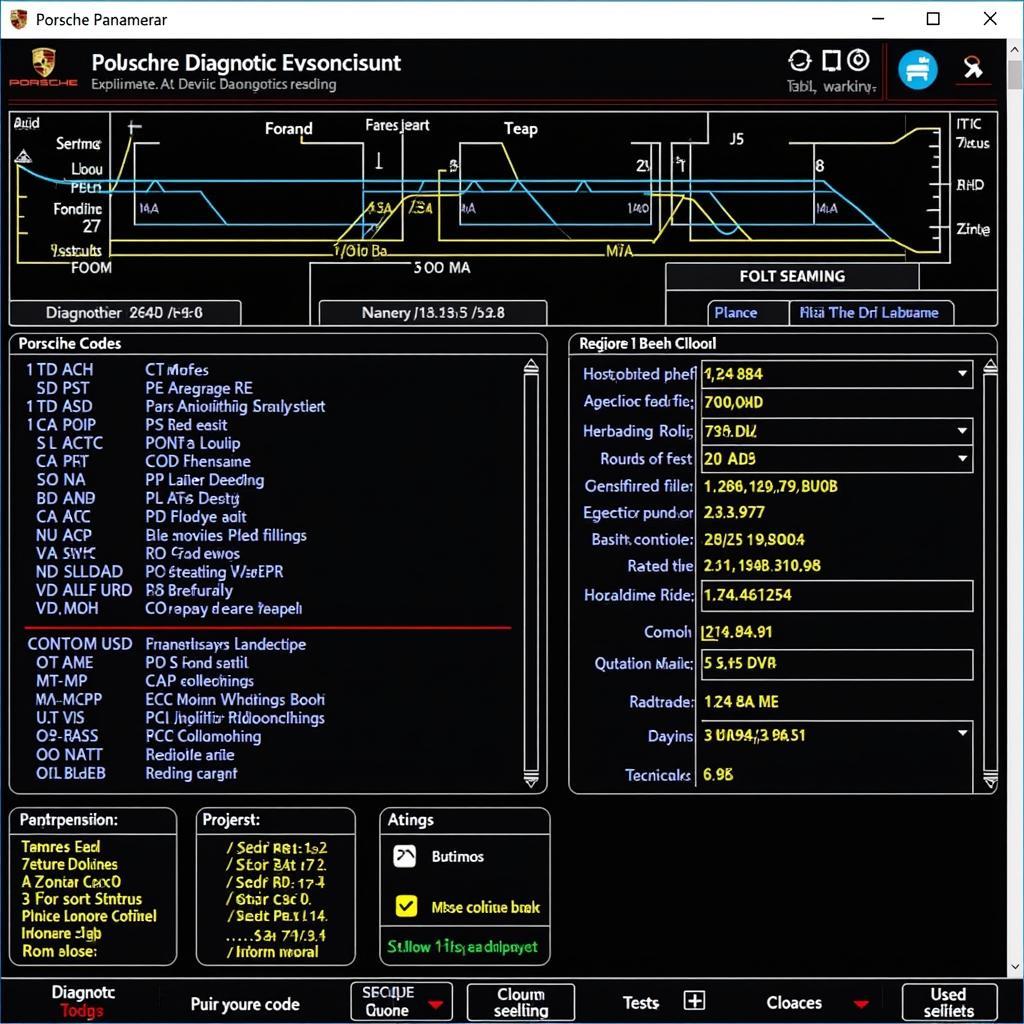Diagnosing car troubles used to involve greasy hands and hours spent tracing wires. Now, with computerized systems dominating modern vehicles like your 2013 Porsche 911, the process has gone digital. “Computer diagnostic on 2013 Porsche 911” is more than just a mouthful; it’s the key to unlocking the mystery behind those warning lights and performance hiccups.
Understanding Your Porsche’s Digital Language
Your 911 speaks in a language of sensor readings, fault codes, and electronic signals. Performing a computer diagnostic is like listening to this conversation. It’s about using specialized tools to tap into your car’s onboard computer system – the Engine Control Unit (ECU) – and retrieve valuable diagnostic information.
What You Need for Porsche 911 Computer Diagnostics
-
OBD-II Scanner: This handheld device connects to your car’s OBD-II port and acts as the translator between you and your Porsche’s computer. They range from basic code readers to advanced professional-grade tools.
-
Software/App: Many scanners work in tandem with software or mobile apps, allowing you to view live data streams, access manufacturer-specific codes, and even perform advanced functions like coding and programming.
“Choosing the right diagnostic tool for your 2013 Porsche 911 is crucial,” advises Jake Carter, Senior Automotive Diagnostician at Cardiagtech. “While generic OBD-II scanners can read basic codes, a Porsche-specific tool or software will provide a more comprehensive diagnosis.”
Steps to Perform a Computer Diagnostic on Your 2013 Porsche 911
-
Locate the OBD-II Port: This standardized 16-pin port is typically located under the dashboard on the driver’s side.
-
Connect the OBD-II Scanner: Turn the ignition OFF before plugging the scanner into the OBD-II port.
-
Turn the Ignition ON: Don’t start the engine yet. This powers up the scanner and allows it to establish communication with the ECU.
-
Follow On-Screen Prompts: Different scanners have varying interfaces, but most will guide you through the process of reading codes, accessing live data, or performing other functions.
-
Retrieve Diagnostic Trouble Codes (DTCs): These codes, often displayed as a combination of letters and numbers, indicate specific areas where the system has detected a problem.
-
Interpret the Codes: This is where things can get tricky. While some codes have straightforward meanings, others can be cryptic. Refer to a reliable source for Porsche-specific code definitions or consult with a qualified technician.
-
Address the Underlying Issues: A computer diagnostic is just the first step. Once you’ve identified the problem areas, further inspection, testing, and repair may be necessary.
-
Clear the Codes: After addressing the issues, use the scanner to clear the DTCs. This step ensures the warning lights are reset, and the system can start fresh.
Going Beyond Basic Diagnostics: Remote Programming and Software Updates
For complex issues or to access advanced features, remote programming and software updates offer a cutting-edge solution. Specialized software and equipment allow technicians to access your Porsche’s ECU remotely and:
- Diagnose intricate electronic faults: Pinpoint issues that might be missed during standard diagnostics.
- Install software updates: Enhance vehicle performance, address known issues, and even unlock new features.
- Perform coding and adaptations: Customize vehicle settings and calibrate components for optimal functionality.
“Remote programming and diagnostics are becoming increasingly common,” notes Carter. “They allow for faster, more efficient repairs and access to a wider pool of specialized expertise.”
Cardiagtech: Your Partner in Porsche Diagnostics and Repair
Navigating the world of computer diagnostics can be daunting. At CARDIAGTECH, we offer comprehensive diagnostic services, remote programming solutions, and expert advice tailored specifically to your 2013 Porsche 911. Contact us at +1 (641) 206-8880 or CARDIAGTECH[email protected] to schedule a consultation or visit our workshop at 276 Reock St, City of Orange, NJ 07050, United States. We’re here to help you keep your Porsche running smoothly.


